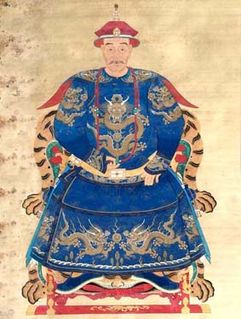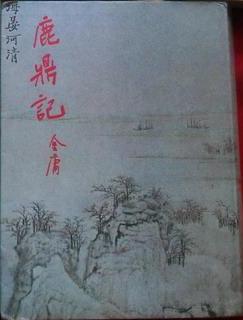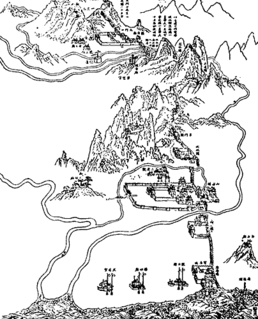Related Research Articles

Zheng He was a Chinese mariner, explorer, diplomat, fleet admiral, and court eunuch during China's early Ming dynasty. He was originally born as Ma He in a Muslim family and later adopted the surname Zheng conferred by the Yongle Emperor. Zheng commanded expeditionary treasure voyages to Southeast Asia, the Indian subcontinent, Western Asia, and East Africa from 1405 to 1433. According to legend, his larger ships carried hundreds of sailors on four decks and were almost twice as long as any wooden ship ever recorded.

The Ming dynasty, officially the Great Ming, was the ruling dynasty of China from 1368 to 1644 following the collapse of the Mongol-led Yuan dynasty. The Ming dynasty was the last imperial dynasty of China ruled by Han Chinese. Although the primary capital of Beijing fell in 1644 to a rebellion led by Li Zicheng, numerous rump regimes ruled by remnants of the Ming imperial family—collectively called the Southern Ming—survived until 1662.

The Yongle Emperor — personal name Zhu Di — was the third Emperor of the Ming dynasty, reigning from 1402 to 1424.

The Hongwu EmperorZhu Yuanzhang, was the founding emperor of the Ming dynasty, reigning from 1368 to 1398.

The Shunzhi Emperor was Emperor of the Qing dynasty from 1644 to 1661, and the first Qing emperor to rule over China proper. A committee of Manchu princes chose him to succeed his father, Hong Taiji (1592–1643), in September 1643, when he was six years old. The princes also appointed two co-regents: Dorgon (1612–1650), the 14th son of the Qing dynasty's founder Nurhaci (1559–1626), and Jirgalang (1599–1655), one of Nurhaci's nephews, both of whom were members of the Qing imperial clan.

Li Zicheng, born Li Hongji, also known by the nickname, "Dashing King", was a Chinese peasant rebel leader who overthrew the Ming dynasty in 1644 and ruled over northern China briefly as the emperor of the short-lived Shun dynasty before his death a year later.

The Kam people, officially known in China as Dong people, a Kam–Sui people of Southern China, are one of the 56 ethnic groups officially recognized by the People's Republic of China. They are famed for their native-bred Kam Sweet Rice, carpentry skills and unique architecture, in particular a form of covered bridge known as the "wind and rain bridge". The Kam people live mostly in Eastern Guizhou, Western Hunan and Northern Guangxi in China. Small pockets of Kam speakers are found in Tuyên Quang Province in Vietnam. The Kam people call themselves Kam, Geml, Jeml or Gaelm.

Wu Sangui, courtesy name Changbai (長白) or Changbo (長伯), 1612 – 2 October 1678, was a Chinese military leader who played an instrumental role in the fall of the Ming dynasty and the establishment of the Qing dynasty in its place.

The Chongzhen Emperor, personal name Zhu Youjian, was the 17th and last Emperor of the Ming dynasty as well as the last ethnic Han to rule over China before the Manchu Qing conquest. He reigned from 1627 to 1644. "Chongzhen," the era name of his reign, means "honorable and auspicious."

The Jianwen Emperor was the second Emperor of the Ming dynasty, reigned from 1398 to 1402. His personal name was Zhu Yunwen (朱允炆). The era name of his reign, Jianwen, means "establishing civility" and represented a sharp change in tone from Hongwu, the era name of the reign of his grandfather and predecessor, the Hongwu Emperor. His reign did not last long: an attempt to restrain his uncles led to the Jingnan rebellion. The Jianwen Emperor was eventually overthrown by one of his uncles, Zhu Di, who was then enthroned as the Yongle Emperor. Although the Yongle Emperor presented a charred body as Zhu Yunwen's, rumours circulated for decades that the Jianwen Emperor had disguised himself as a Buddhist monk and escaped from the palace when it was set on fire by Zhu Di's forces. Some people speculated that one of the reasons behind why the Yongle Emperor sponsored the admiral Zheng He on his treasure voyages in the early 15th century, was for Zheng He to search for the Jianwen Emperor, who was believed to have survived and fled to Southeast Asia. Some historians believe that the Jianwen Emperor had indeed survived and escaped from Nanjing, but the official histories of the Ming dynasty were modified later during the Qing dynasty to please the Manchu rulers.

The Revolt of the Three Feudatories, also known as the Rebellion of Wu Sangui, was a rebellion in China lasting from 1673 to 1681, during the early reign of the Kangxi Emperor of the Qing dynasty (1644–1912). The revolt was led by the three lords of the fiefdoms in Yunnan, Guangdong and Fujian provinces against the Qing central government. These hereditary titles had been given to prominent Han Chinese defectors who had helped the Manchu conquer China during the transition from Ming to Qing. The feudatories were supported by Zheng Jing's Kingdom of Tungning in Taiwan, which sent forces to invade Mainland China. Additionally, minor Han military figures, such as Wang Fuchen and the Chahar Mongols, also revolted against Qing rule. After the last remaining Han resistance had been put down, the former princely titles were abolished.

Toghon Temür, also known by the temple name Huizong bestowed by the Northern Yuan dynasty and by the posthumous name Emperor Shun bestowed by the Hongwu Emperor of the Ming dynasty, was a son of Khutughtu Khan Kusala who ruled as emperor of the Yuan dynasty. Apart from Emperor of China, he is also considered the last Khagan of the Mongol Empire.
The Yongli Emperor, personal name Zhu Youlang, was the fourth and last emperor of the Southern Ming dynasty. His era name means "Perpetual calendar".

The Deer and the Cauldron, also known as The Duke of Mount Deer, is a historical novel by Jin Yong, the longest of his novels and the last to be published. It was initially published in Hong Kong as a serial, running from 24 October 1969 to 23 September 1972 in the newspaper Ming Pao.

The Battle of Shanhai Pass, fought on May 27, 1644 at Shanhai Pass at the eastern end of the Great Wall of China, was a decisive battle leading to the beginning of the Qing dynasty rule in China proper. There, Qing Prince-Regent Dorgon allied with former Ming general Wu Sangui to defeat rebel leader Li Zicheng of the Shun dynasty, allowing Dorgon and the Manchus to rapidly conquer Beijing and replace the Ming dynasty.
The Rebellion of Cao Qin was a day-long uprising in the Ming dynasty capital of Beijing on August 7, 1461, staged by Chinese general Cao Qin and his Ming troops of Mongol and Han descent against the Tianshun Emperor (1457–1464). Cao and his officers launched the insurrection out of fear of being persecuted by Tianshun. Tianshun had just gained back the throne from his half-brother the Jingtai Emperor, who rose to power during the 1449 Tumu Crisis.

The transition from Ming to Qing, Ming–Qing transition, or Manchu invasion of China from 1618 to 1683 saw the transition between two major dynasties in Chinese history. It was the decades-long conflict between the emergent Qing dynasty (清朝), the incumbent Ming dynasty (明朝), and several smaller factions in China. It ended with the rise of the Qing, and the fall of the Ming and other factions.

Mount Mian, also known by its Chinese name Mianshan, is a mountain in the town of Mianshan in Jiexiu, Jinzhong, in central Shanxi Province in north China. Its official scenic area opened in the year 2000 and covers 75 km2 (29 sq mi), with about 400 attractions grouped into 14 tourist areas.
The Lin Kuan rebellion (林寬起義) was an insurrection by the Kam people in the mountainous regions of southern Huguang, due to the confiscation of their land by the Ming dynasty. The rebellion lasted only one year before their leader, Lin Kuan, was killed in October 1397.
References
- ↑ Geary 2003, p. 8.
- 1 2 Geary 2003, p. 9.
- ↑ Geary 2003, p. 10.